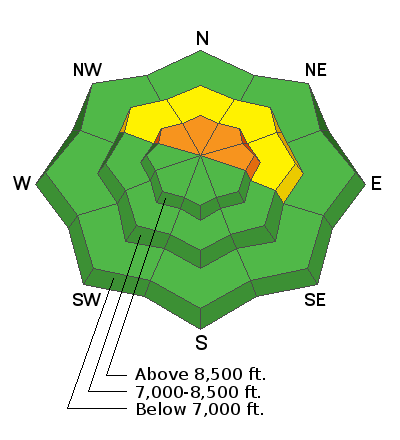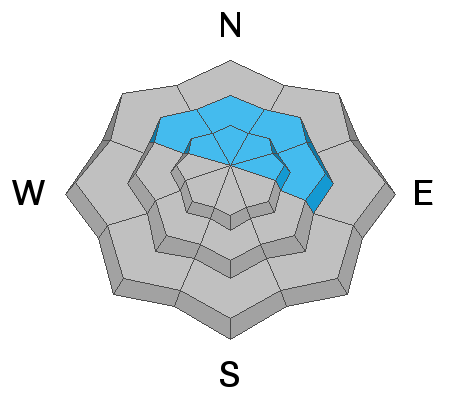This morning, skies are partly cloudy, winds are light to moderate and temperatures are warm. Currently, the mountain temperatures hover in the mid 20's °F to low 30s °F at the mid and upper elevations. The southwesterly winds have bumped up in speed overnight, with speeds of 15-25 mph, with the highest gusts hitting 50 mph across the upper ridgelines.
Today will be the final calm before the storm, with partially cloudy skies, and even periods of sunshine poking through this afternoon. Mountain temperatures will climb into the upper 20s °F and mid-30s °F. The southwesterly winds will remain moderate, blowing at speeds of 10-20 mph with the occasional upper ridgeline gust up to 30-40 mph.
Tonight, cloud cover will increase overnight and light snowfall should begin sometime after midnight. Snow totals should remain relatively low over the next 24 hrs, and the brunt of the storm and the heaviest snow will occur Thursday evening through late Thursday night. The snow density will then become lighter Friday as colder air moves in. While the entirety of the storm still feels a way out, below are some graphics from the
National Weather Service showing some probabilistic snow totals for the first wave of the storm (12/22-12/26). Still impressive numbers so far, let's keep our fingers crossed!


There is still plenty of good riding to be found in the backcountry. Southerly slopes have begun to crust over with the multiple days of sunshine, but any shaded terrain still holds soft cold snow. With these past few cold-clear nights, the surface snow in protected, non-solar facing terrain has begun to facet and weaken. While this makes for fine riding conditions today, as the next storm moves into the area, the new snow may bond poorly to the old snow in these areas or become another weak layer in the future.
No new avalanches were reported from the backcountry yesterday.
Reports of large booming collapses and poor snowpack structure continue to be observed by backcountry travelers. 





